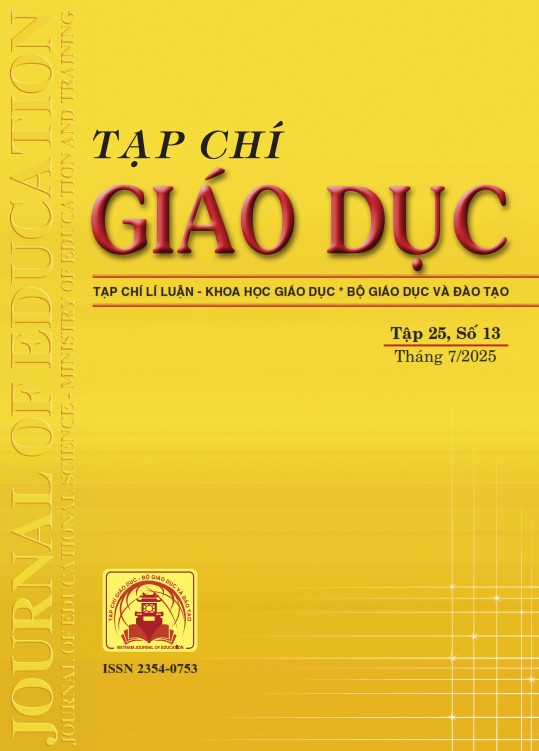Các mô hình đánh giá hiệu quả giảng dạy trong giáo dục đại học và định hướng ứng dụng cho Việt Nam
Tóm tắt
Teaching effectiveness is a fundamental factor determining the quality of education, requiring multi-faceted attention from stakeholders. However, it is a difficult concept to measure independently as it is composed of numerous interconnected factors. This paper studies the approaches and analyzes models for evaluating teaching effectiveness in higher education, including: the HILVE model by Rindermann and Amelang (1994), the principles of excellent teaching by Kember và Mcnaught (2007), and the two-dimensional matrix by Chan and Chen (2024), thereby providing comments and recommendations to improve teaching effectiveness in higher education institutions. All models have elements related to the connection between students and faculty, or between students and the learning environment. The active interactions between the model components create an effective and engaging learning environment. The models can be applied to varied educational contexts with different subject matter, teaching methods, and classroom structures. The research results only have theoretical significance in testing and assessment but also yield practical values in ensuring education quality at higher education institutions.
Tài liệu tham khảo
Ajmal, F., Durrani, R., & Mohammad, N. (2021). Teaching effectiveness: A university students’s perspective. Pakistan Journal of Educational Research, 4(4). https://doi.org/10.52337/pjer.v4i4.332
Chan, C. K. Y., & Chen, S. W. (2024). Conceptualisation of teaching excellence: An analysis of teaching excellence schemes. Assessment & Evaluation in Higher Education, 49(4), 1-13. https://doi.org/10.1080/02602938. 2023.2271188
Dash, U., & Barman, P. (2016). Teaching effectiveness of secondary school teachers in the district of Purba Medinipur, West Bengal. IOSR Journal of Humanities and Social Science, 21(7), 50-63. https://doi.org/ 10.9790/0837-2107075063
Kember, D., & Leung, D. Y. P. (2009). Development of a questionnaire for assessing students’ perceptions of the teaching and learning environment and its use in quality assurance. Learning Environments Research, 12(1), 15-29.
Kember, D., & McNaught, C. (2007). Enhancing university teaching: Lessons from research into award-winning teachers. Routledge.
Kreber, C. (2002). Teaching Excellence, Teaching Expertise, and the Scholarship of Teaching. Innovative Higher Education, 27, 5-23. https://doi.org/10.1023/A:1020464222360
Rindermann, H., & Schofield, N. (2001). Generalizability of Multidimensional Student Ratings of University Instruction Across Courses and Teachers. Research in Higher Education, 42, 377-399. https://doi.org/10.1023/A:1011050724796
Rindermann, H., & Amelang, M. (1994). Das Heidelberger Inventar zur Lehrveranstaltungs-Evaluation (HILVE). Handanweisung [The Heidelberg Inventory on Teaching Evaluation]. Heidelberg: Asanger.
Robinson, W., & Hilli, A. (2016). The English “teaching excellence framework” and professionalising teaching and learning in research-intensive universities: An exploration of opportunities, challenges, rewards and values from a recent empirical study. Foro de Educación, 14(21), 151-165. https://doi.org/10.14516/fde.2016.014.021.008
Skelton, A. (2007). International Perspectives on Teaching Excellence in Higher Education. Routledge.
Wood, M., & Su, F. (2017). What makes an excellent lecturer? Academics’ perspectives on the discourse of ‘teaching excellence’ in higher education. Teaching in Higher Education, 22(4), 451-466. https://doi.org/10.1080/ 13562517.2017.1301911
Tải xuống
Đã Xuất bản
Cách trích dẫn
Số
Chuyên mục
Giấy phép

Tác phẩm này được cấp phép theo Ghi nhận tác giả của Creative Commons Giấy phép quốc tế 4.0 .












